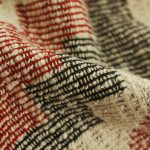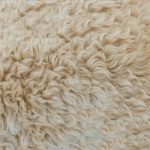When you run your hand over French Terry and Velour fabrics, you're likely to notice a distinct difference in texture. French Terry's looped pile construction gives it a soft, absorbent quality that's perfect for loungewear and towels, while Velour's plush, cut pile on both sides creates a luxurious, smooth surface ideal for clothing and upholstery. But what exactly makes these two fabrics feel so different? Is it the type of weave, the fiber composition, or something else entirely? As you explore the texture of these fabrics, you'll start to uncover the subtle variations that set them apart – but where do you start?
Table of Contents
Defining French Terry Texture
When you run your hand over a fabric with a French terry texture, you'll notice a distinct softness and a subtle sheen, thanks to the unique weaving process that creates loops on one side and a smooth surface on the other.
This type of fabric is made using a specific type of weaving called a 'terry weave,' which involves using two sets of yarns that are woven in a specific way to create the looped and smooth sides.
The loops on one side give French terry its signature texture, making it perfect for garments that require a soft, absorbent fabric, such as towels and sweatpants.
As you explore French terry further, you'll notice that it's often used in activewear and loungewear because of its breathability and moisture-wicking properties.
The smooth side of the fabric helps to prevent pilling and snagging, while the looped side provides excellent absorption and quick drying.
Overall, French terry is a versatile and practical fabric that's perfect for a variety of applications.
Its unique texture and performance make it a popular choice among manufacturers and consumers alike.
The Softness of Velour Explained
When you run your hand over velour, you can't help but notice its exceptional softness. But what makes velour so plush?
To understand its softness, you'll want to examine three key factors: the height and density of the pile, the type and blend of fibers used, and the weave pattern and finish.
Pile Height and Density
Diving into the world of velour, you'll quickly discover that its softness can be attributed to its unique pile height and density, which sets it apart from other fabrics, including French terry.
When you run your hand over velour, you'll notice that it has a plush, smooth surface that's gentle to the touch. This is due to the fabric's pile height, which refers to the length of the fibers that protrude from the fabric's surface.
The density of velour also plays a significant role in its softness. Velour has a higher pile density than French terry, which means that the fibers are packed more closely together. This creates a fabric that's not only soft but also durable and resistant to pilling.
Velour's pile height is typically longer than French terry's, giving it a more luxurious feel. The high pile density of velour makes it more resistant to wear and tear. The unique combination of pile height and density in velour creates a fabric that's both soft and durable.
Fiber Type and Blend
Velour's exceptional softness can also be attributed to its fiber type and blend, which plays a crucial role in determining the fabric's overall texture and feel, allowing you to experience a gentle caress with every touch.
When you run your hands over velour, you're likely to notice the smooth, plush surface that's created by the combination of fibers used.
Typically, velour is made from a blend of cotton, polyester, and sometimes nylon or spandex.
The cotton content gives velour its breathability and natural softness, while the polyester adds durability and wrinkle resistance.
The addition of nylon or spandex can enhance the fabric's stretchiness and flexibility.
As you explore the fiber type and blend of velour, you'll find that the specific combination of fibers can affect the overall texture and performance of the fabric.
For example, a higher cotton content can make velour more prone to shrinkage, while a higher polyester content can make it more resistant to wrinkles.
By understanding the fiber type and blend of velour, you can better appreciate its unique characteristics and benefits.
This knowledge will also help you to make informed decisions when choosing velour for your next project.
Weave Pattern and Finish
Beyond its fiber type and blend, velour's distinct weave pattern and specialized finishing process significantly contribute to its characteristic softness.
As you examine velour's texture, you'll notice a plush pile that's created by the way the yarns are woven together. This unique construction is what sets velour apart from other fabrics, including French terry.
The weave pattern of velour is designed to create a soft, luxurious surface.
- Pile height: Velour's pile is typically higher than that of French terry, giving it a deeper, plusher texture.
- Pile density: The density of the pile also plays a role in velour's softness, with a denser pile creating a more luxurious feel.
Weave and Loop Structure Differences
When you examine the weave and loop structure of French Terry and Velour fabrics, you'll notice that French Terry has a more open, looped pile on one side, while Velour features a plush, cut pile on both sides. This key difference significantly affects the texture and feel of each fabric.
French Terry's looped pile gives it a soft, absorbent quality, making it ideal for clothing that requires breathability, like activewear and towels.
On the other hand, Velour's cut pile on both sides creates a luxurious, smooth surface that's often used in clothing that requires a soft, lustrous appearance, such as evening wear or loungewear. The cut pile also makes Velour less absorbent than French Terry.
Another difference is the way the loops or piles are woven into the fabric. French Terry has a more relaxed weave, which allows for the looped pile to move freely, while Velour's weave is denser, which gives it a more rigid structure.
Understanding these differences in weave and loop structure will help you decide which fabric is best suited for your needs, whether it's for fashion, home decor, or another application.
Fiber Composition Comparison Analysis
When comparing French Terry and Velour, you'll notice significant differences in their fiber composition.
You'll typically find that French Terry is made from a higher percentage of cotton, while Velour often blends synthetic fibers with cotton.
As you examine the fiber composition of each fabric, consider how the cotton-to-synthetic ratio affects the overall texture, durability, and performance of the fabric.
Cotton Vs. Synthetic Blend
When you choose a cotton French terry fabric, you can expect a softer, more breathable, and absorbent material. Cotton is a natural fiber that allows for airflow and moisture-wicking properties, making it ideal for activewear or loungewear.
On the other hand, a synthetic blend French terry fabric is often more durable and resistant to wrinkles.
- Durability: Synthetic blends tend to be more resistant to wear and tear, while cotton fabrics may be more prone to pilling or fraying.
- Moisture-wicking: Cotton is a natural moisture-wicker, while synthetic blends may require special treatments to achieve similar properties.
As you weigh the pros and cons of each fiber composition, consider your lifestyle and the intended use of the garment. Do you prioritize softness and breathability, or durability and ease of care?
Weave and Yarn Density
Analyzing the weave and yarn density of French terry fabrics reveals significant differences in their fiber composition, which can greatly impact the overall performance and feel of your garment.
When you examine the weave of French terry, you'll notice that it's typically constructed using a simple weave with two yarns – a ground yarn and a pile yarn. The ground yarn creates a foundation, while the pile yarn loops on the surface to give French terry its characteristic softness.
Comparing French terry's weave and yarn density to velour reveals a stark contrast. Velour is known for its denser construction and uses two types of yarn – one that floats and the other that loops on the surface.
The difference in weave and yarn density can be seen and felt – velour often feels less flexible than French terry due to the floating yarn.
Your fabric's durability, weight, and appearance depend greatly on these elements, as more compact fabrics have an upper hand on friction resilience, absorbency and lastly print and stitchwork impression and finishing appearance.
Thickness and Density Variables
Considering thickness and density, French Terry and Velour exhibit distinct differences in these variables, which significantly impact their performance and suitability for various applications. French Terry tends to be thicker and more dense than Velour, making it a popular choice for casual wear, activewear, and home textiles.
Velour, on the other hand, is often thinner and less dense, making it ideal for garments that require a softer, more luxurious feel, such as loungewear and sleepwear.
French Terry is generally heavier than Velour, which can affect the way it drapes and moves on the body.
The thickness and density of French Terry make it a better insulator than Velour, making it a great choice for colder climates.
The density of French Terry also makes it more resistant to wear and tear, while Velour's lower density can make it more prone to pilling or snagging.
Textured Vs Smooth Fabric Surface
When it comes to the surface texture of French Terry and Velour, you'll notice that they also exhibit distinct differences that can greatly impact the overall look and feel of a garment or textile, such as the way it catches light or provides tactile interest. One of the main differences is the level of texture and smoothness.
| Fabric Type | Surface Texture |
|---|---|
| French Terry | Textured, with visible loops on the surface |
| Velour | Smooth, with a plush pile that gives it a soft sheen |
| French Terry | May have a slight sheen, but overall has a more matte finish |
| Velour | Can have a high sheen, depending on the type of fibers used |
As you can see from the table, French Terry has a more textured surface, while Velour is generally smooth. This difference in texture can affect how the fabric drapes and moves, as well as how it catches light. If you're looking for a fabric with a lot of visual interest, French Terry might be the way to go. But if you prefer a smooth, sleek look, Velour could be the better choice.
Comparing Tactile Fabric Experience
As you run your hand over the surface of French Terry and Velour, you'll notice distinct tactile differences that can greatly impact your sensory experience of the fabric. French Terry has a soft, absorbent, and slightly fuzzy texture that's gentle on the skin. In contrast, Velour has a plush, smooth, and luxurious texture that's often associated with high-end clothing.
The tactile differences between French Terry and Velour can be attributed to their unique fabric constructions. French Terry has a looped pile construction that creates a soft and absorbent surface, while Velour has a cut pile construction that creates a smooth and plush surface.
- Softness: French Terry is generally softer and more absorbent than Velour, making it ideal for casual wear and loungewear.
- Smoothness: Velour is smoother and more luxurious than French Terry, making it ideal for formal wear and high-end clothing.
Frequently Asked Questions
Can You Iron French Terry to Remove Wrinkles?
You can iron French Terry to remove wrinkles, but be cautious not to scorch the fabric. Use a low heat setting, a pressing cloth, and gentle strokes to smooth out wrinkles without damaging the fabric.
Is Velour Fabric Prone to Pilling Over Time?
You'll notice that velour fabric can be prone to pilling over time due to its plush pile construction. However, the likelihood of pilling depends on factors like fabric quality, usage, and maintenance.
How Do You Care for a French Terry and Velour Blend?
You care for a French Terry and Velour blend by washing it in cold water, gently, and avoiding fabric softener. You also shouldn't wring or twist the fabric, and air drying it is best to prevent pilling.
Can French Terry Be Used for Outdoor Clothing and Gear?
You can use French terry for outdoor clothing and gear, but it's not the best choice due to its limited water resistance and breathability. It's better suited for casual, low-impact activities or as a mid-layer.
Does Velour Fabric Make a Person Feel Hot in Summer?
When you wear velour fabric in the summer, it can indeed make you feel hot, especially in humid or extremely sunny conditions. Its soft, plush pile traps warmth and can't breathe as well as some other fabrics do.
- How Does Ring Spun Cotton Affect Garment Fit and Shape Retention? - August 13, 2024
- What Are the Challenges in Producing Ring Spun Cotton? - August 13, 2024
- Is Ring Spun Cotton Suitable for Plus-Size Clothing? - August 13, 2024







